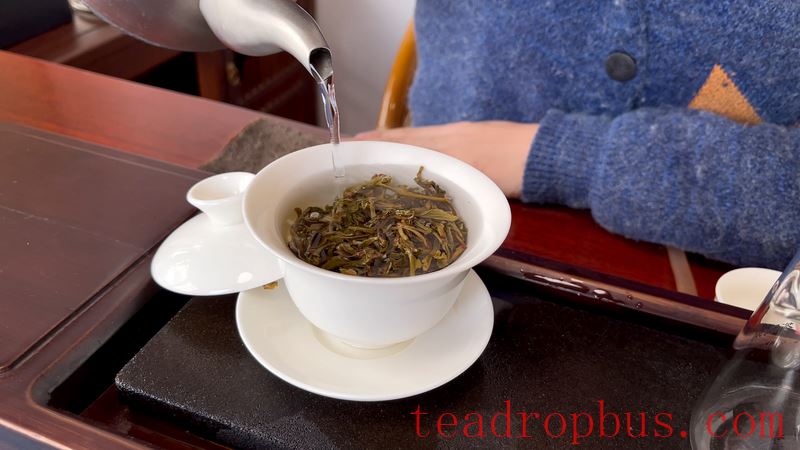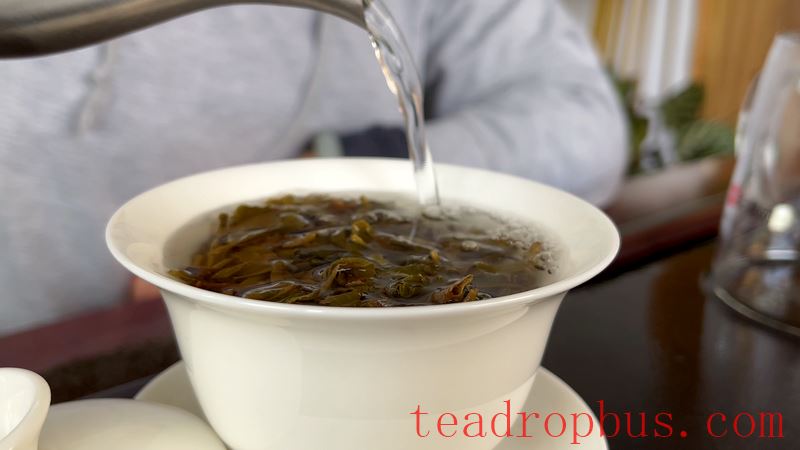The brewing method of Pu'er Tea is mainly grasped from the following 5 aspects:
I. Pu'er Tea Brewing Utensils
1. Purple Clay Pot (recommended): Since Pu'er tea benefits from high temperatures to awaken the tea leaves and extract their contents, a purple clay pot, with its porous interior, provides good ventilation and heat retention. It preserves the aroma and aged flavor of Pu'er tea well when brewing, making it an ideal choice.
2. Lidded Glass Cup (most commonly used): A lidded glass cup does not absorb flavors, allowing you to taste the true flavor of the tea. You can freely appreciate the color changes in the Pu'er tea infusion, which is why the lidded cup is the most commonly used brewing vessel in modern tea ceremonies. However, using a lid cup requires some skill to avoid burning your hands.
3. Earthenware Teapot with Handle (practical and convenient): The brewing method for Pu'er tea is suitable for larger teaware to better showcase the color, aroma, and flavor qualities of Pu'er tea.

II. Amount of Pu'er Tea Used
For daily brewing and drinking of Pu'er tea, about 10g of tea is suitable for an 180ml teapot.
III. Water Temperature Requires Attention
Pu'er tea has thick leaves and is often compressed, so it requires higher water temperatures and heat to brew properly. Therefore, the water temperature for brewing Pu'er tea is generally required to be 100°C.
For younger teas or those made from tender leaves, the water temperature should be controlled around 95°C. When the water boils, let it sit for a moment to cool slightly, which helps prevent scalding the fresh leaves and creating a waterlogged flavor that affects the freshness and pleasantness of the tea.
The brewing method for newly produced Pu'er ripe tea is slightly different. Since ripe tea undergoes artificial pile fermentation, the water temperature needs to reach 100°C to bring out the smooth and sweet taste of the tea.

IV. Awakening the Tea is Essential
1. If raw Pu'er tea is stored in an open environment, it usually doesn't need to be awakened. However, an open environment can be humid, potentially harming the quality of the tea.
Awakening Method: Place the raw Pu'er tea in an open environment for approximately half a month to a month without opening the packaging. When breaking up the tea, start by removing the outer layers and drink them before moving on to the inner layers.
2. Pu'er ripe tea also needs to be awakened, especially if it is relatively young and has a strong pile fermentation smell. The awakening method involves breaking up the entire tea cake and letting it sit for about a week before drinking.
3. The pre-infusion before actual brewing is also known as washing the tea or warming the tea. Place the tea into the teapot and pour hot water over it. After about 10 seconds, pour out the water. This step serves to raise the temperature of both the tea and the brewing utensil. By warming and briefly soaking the tea, it helps the leaves expand and the tea flavors to release more easily.

V. Control the Infusion Time Well
For the first five infusions of Pu'er tea, steep for 5-7 seconds; after the sixth infusion, steep for 7-10 seconds; after the tenth infusion, you can appropriately extend the time to maintain a consistent taste.
As the number of infusions increases, you can gradually increase the brewing time, but the specific brewing time should be adjusted flexibly based on the concentration of the tea liquor. Some Pu'er teas require 2-3 infusions before they produce a rich and fragrant infusion.
Try to drain the tea liquor completely; add water for the next infusion only when you're ready to drink. Do not leave the tea Steeping for long periods, as this can affect the color, aroma, and taste of the tea liquor. When not drinking immediately, strain the tea liquor and leave the lid of the teapot open.